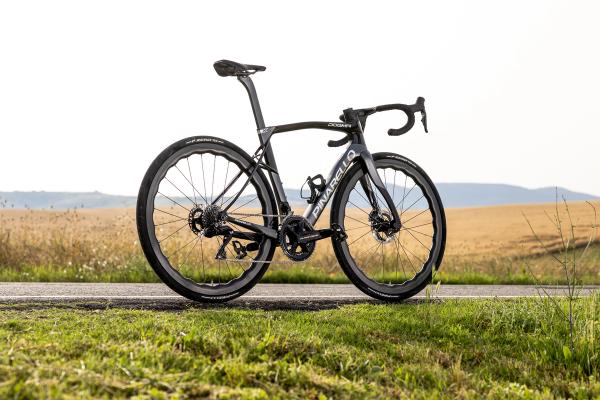Riding in the saddle versus standing: which is better?
Choosing whether to ride in or out of the saddle has a big effect on aerodynamics and climbing performance
Tom Hallam-Gravells
Online Production Editor
When should you ride in the saddle or out of it? It’s probably not a question you’ve ever paid much attention to. After all, it’s usually a sub-conscious decision dictated by momentum on the bike and comfort - a sore rear end is enough to make anyone dance on the pedals.
However, there is a raft of scientific research available on the subject looking at the aerodynamic and climbing benefits of the two riding positions, and there are times when one riding position is much more beneficial than the other for performance.
Of course, we couldn’t simply accept the science, so we recruited Si Richardson and Ollie Bridgewood to do a little science of our own using the new Wahoo Kickr Move - an indoor trainer that is designed to boost comfort by moving as you ride. Here’s what we found out.
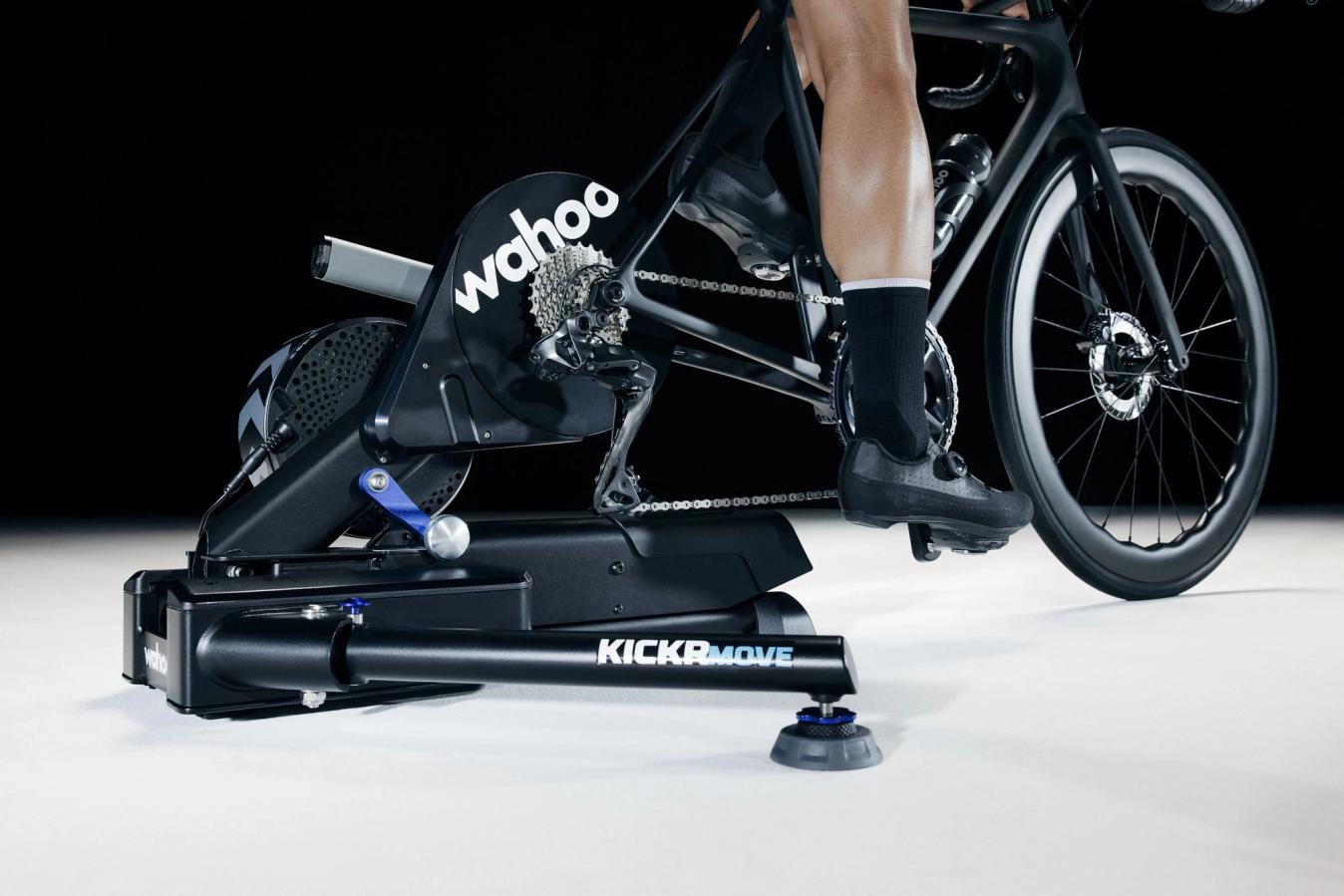
© Wahoo
The new Wahoo Kickr Move
Read more: Wahoo releases Kickr Move and Kickr Bike Shift
More aerodynamic doesn’t mean faster
Before we delve into our own test, let’s take a look at the existing science, starting with aerodynamics - we know, not everything is about being aero, but when it comes to riding in or out of the saddle, it’s really important.
When riding out of the saddle, your frontal area is much larger than when you’re riding in it, and that creates significantly more drag. And not by a little bit; a rider’s drag coefficient is 25% higher when riding out of the saddle. The difference that added drag makes increases the faster you go.
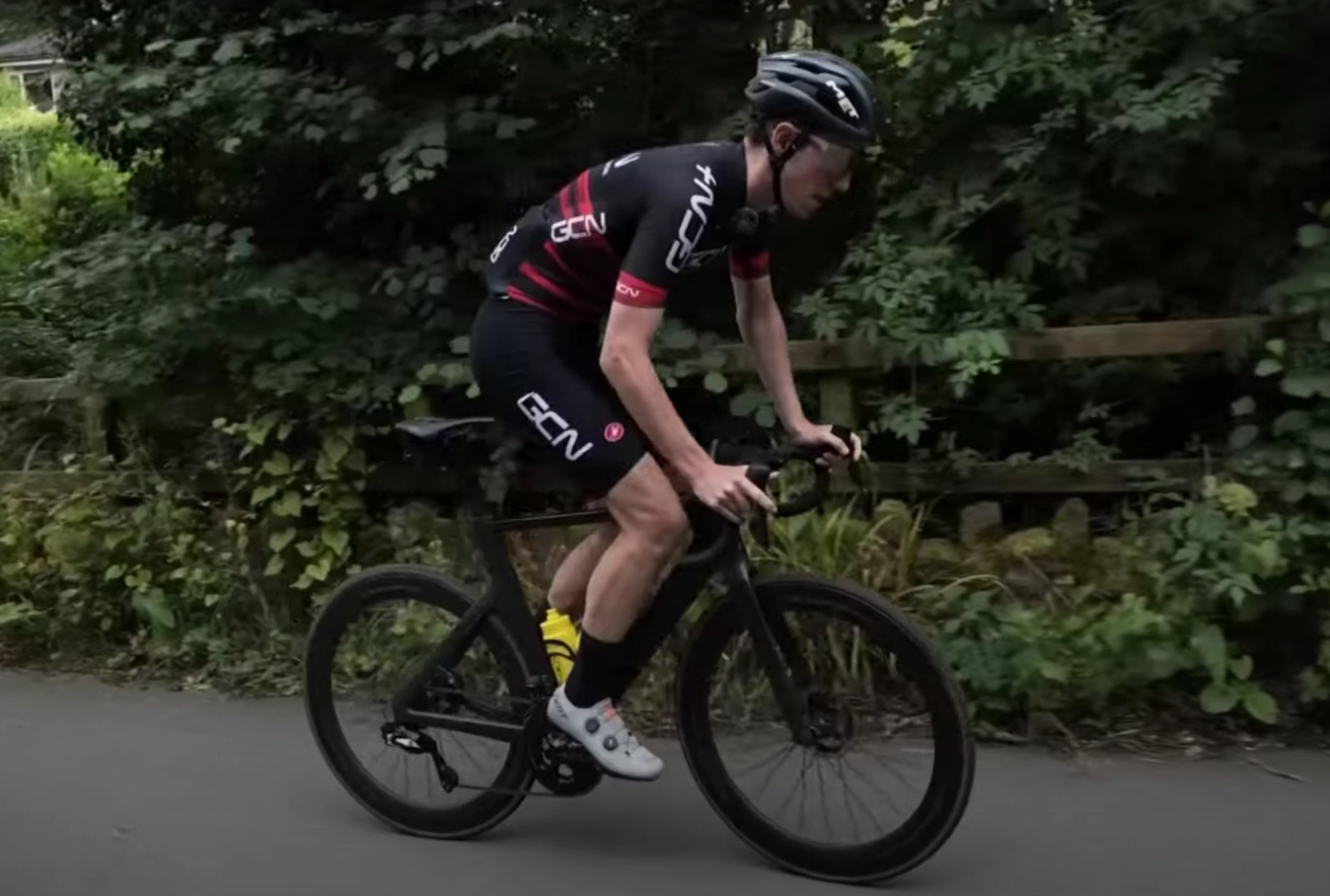
© GCN
Riding out of the saddle results in more drag
An early victory for riding in the saddle, then? Partially, except it’s not quite that simple as riders can create more power when riding out of the saddle, with a study by Grégoire Millet, Cyrille Tronche, Nicolas Fuster and Robin Candau revealing that you can produce “25% more power out of the saddle while sprinting”.
Does that 25% added power cancel out the added 25% drag coefficient, making both methods of riding as fast as each other? Not quite, as a 25% added drag coefficient doesn’t mean 25% slower, hence why WorldTour pros always sprint out of the saddle.
Read more: Lightweight vs aero - which bike climbs faster?
The metabolic cost of climbing
Of course, most every-day riders don’t spend much time sprinting out of the saddle, so the aerodynamic science isn’t that relatable. Instead, amateur cyclists spend the majority of their time riding out of the saddle while climbing.
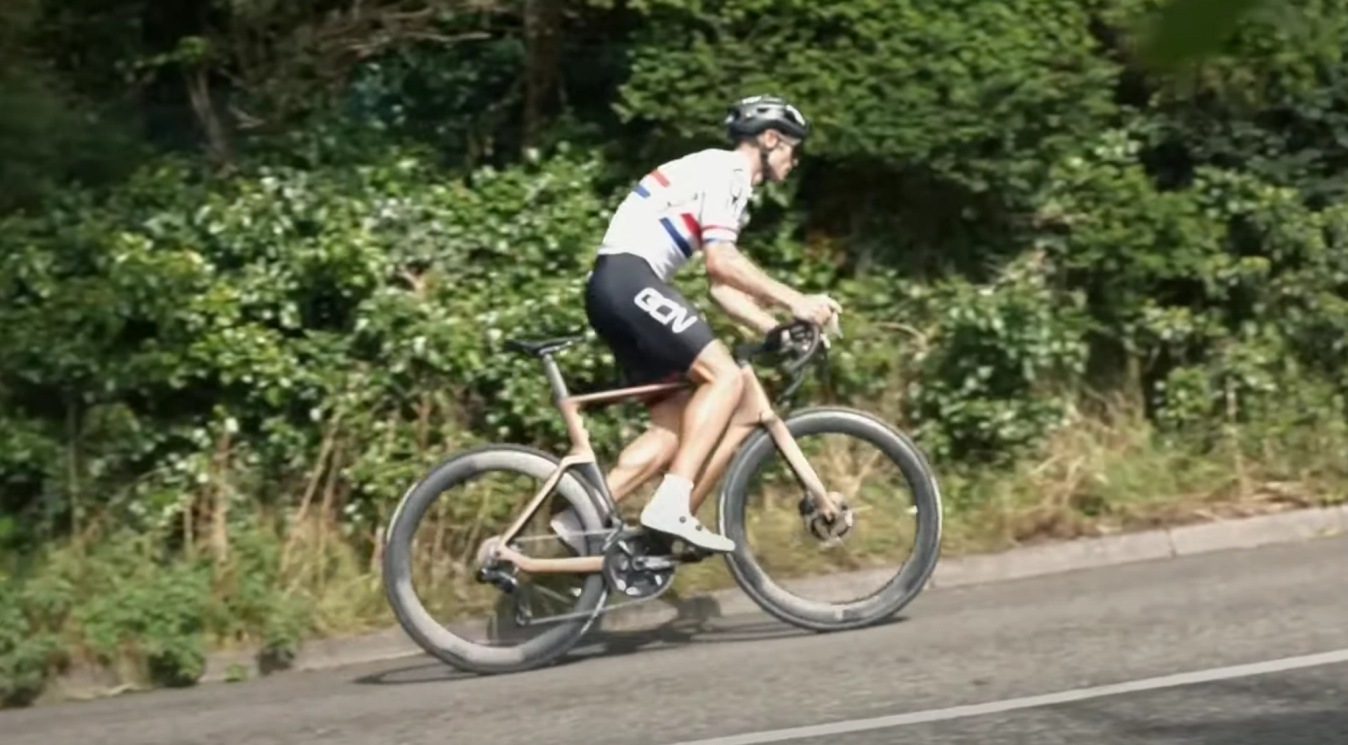
© GCN
Climbing out of the saddle isn't always efficient
For anyone who was glad to see the back of aerodynamics, we’ve got some bad news here as it’s still an important factor on climbs. There is also good news as, according to resident tech nerd Ollie Bridgewood, the differences between both riding positions becomes negligible at speeds below 16 kph. Most of us aren’t powering up climbs much faster than that, so we can trust Ollie’s wisdom and instead turn our attention to metabolic cost.
This is the energy required to produce a given power. The lower your metabolic cost, the more efficient you are, producing more power for less energy. Studies have consistently shown that riding out of the saddle has a much higher metabolic cost, with the additional upper body effort required to support your body and move the bike costing extra energy.
Once again, things aren’t quite that simple. In The effect of cycling intensity on cycling economy during seated and standing cycling, Marco Arkesteijn, Simon Jobson, James Hopker and Louis Passfield discovered that “the difference in economy diminishes when cycling intensity increases”. More specifically, their research showed that the difference in efficiency between the two riding positions was much smaller when riding at 70% of maximal aerobic power than it had been at 50% - maximal aerobic power is roughly 10% to 20% above FTP. So, the harder you ride, the more efficient it becomes to ride out of the saddle. But what is the tipping point when riding in the saddle becomes the better option?
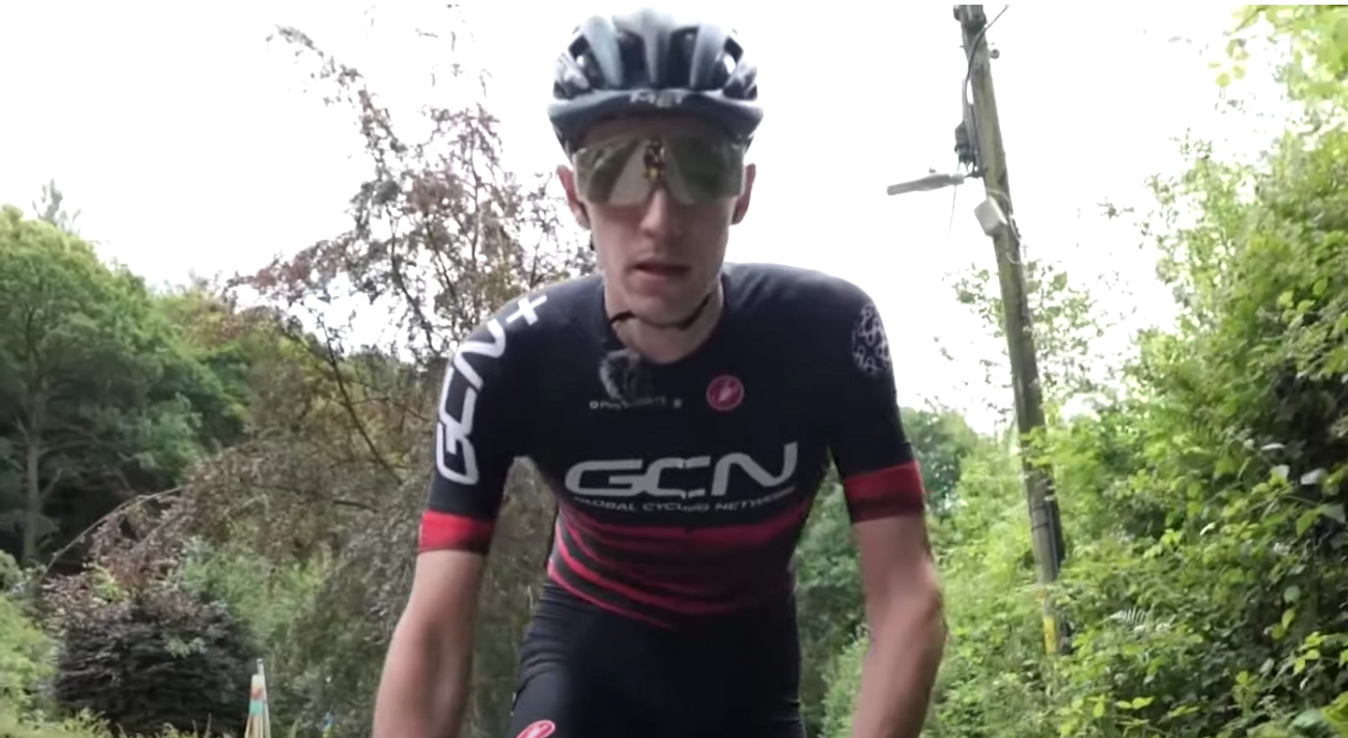
© GCN
Riding out of the saddle is more efficient at higher intensities
Back in 2008, Ernt Hansen and Harry Waldeland published a paper looking into the subject, Seated versus standing position for maximization of performance during intense uphill cycling. They chose 10 cyclists and got them to ride at four different outputs that would lead them to fail in eight-minute, four-minute, ninety-second and 30-second maximum efforts respectively - we’re glad we weren’t one of the chosen riders for the experiment!
As they had hypothesised, the study found that the riders were more efficient at higher power outputs when riding out of the saddle, with the tipping point coming at 94% of their maximal aerobic power, at which point it was more efficient to ride in the saddle.
Most of us don’t know what 94% of our maximal aerobic power is because, well, why would you? In the real world, it essentially means that it’s better to ride out of the saddle for any climbs shorter than roughly seven minutes, and in the saddle for anything longer.
Read more: How many calories do you burn while cycling?
The individual element
There is also an important individual element which affects riding out of the saddle, with everyone’s muscles activating at different times and in different ways. This variation is much greater between riders when riding out of the saddle compared to on it. Riding in the saddle is a much more static position with smaller variations between pedal strokes.
This indicates that there is a huge individual element to riding in and out of the saddle, which explains why some people can fly up climbs out of the saddle, while others simply can’t.
GCN science
There’s only one way to explore this further: it’s time for some GCN science. We got Si Richardson and Ollie Bridgewood to ride in the saddle and out of the saddle at 4.5 watts per kilogram for five minutes, before monitoring their heart rates and perceived efforts at the end of the time.
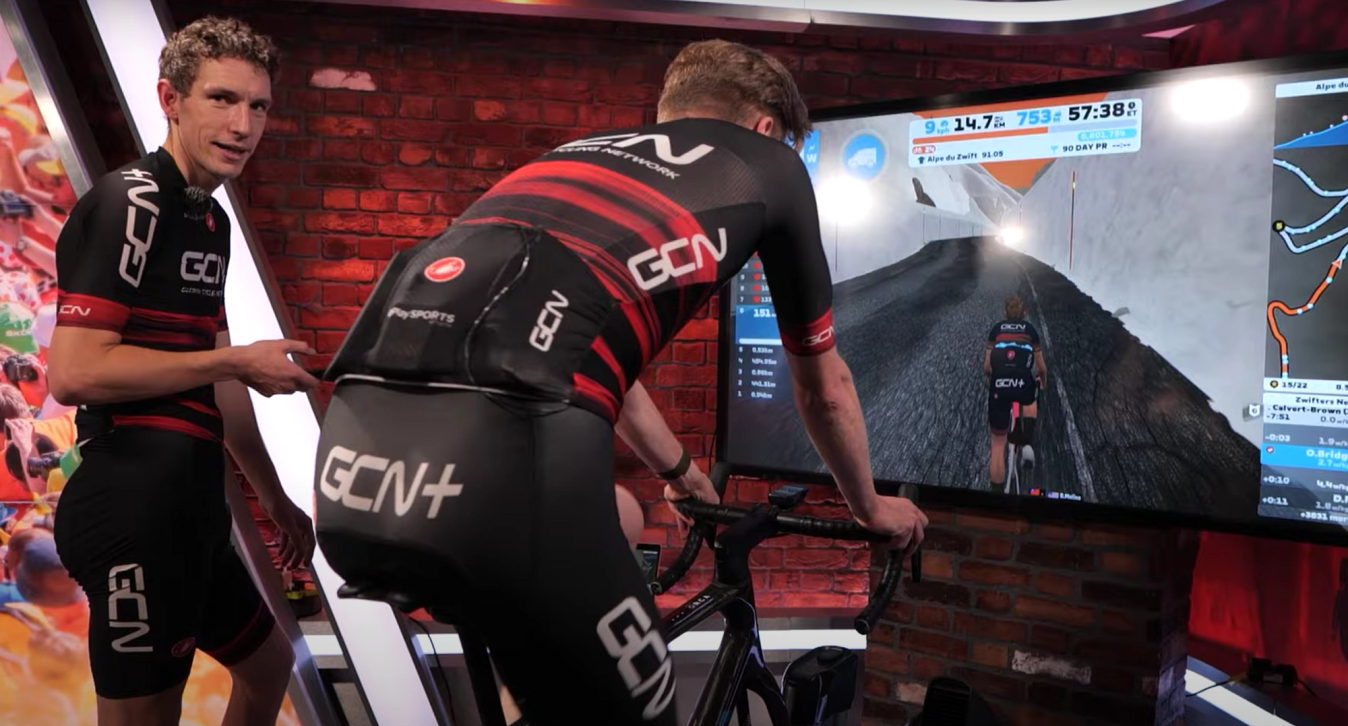
© GCN
Ollie and Si participate in some GCN science
Si hates riding out of the saddle and avoids it at all costs, while Ollie is the complete opposite - and the results reflected this. At the end of his seated effort, Si had a heart rate of 169bpm and a perceived effort of 7. That heart rate shot up to 180bpm for the standing effort, with an increased perceived effort of 8.5.
Ollie’s heart rate was 156bpm while seated, while he put his effort at 14 on the Borg Scale (okay, we switched up the scales from a 1-10 to the Borg 6-20 equivalent which admittedly slightly affects this otherwise flawless test). For his preferred standing effort, Ollie’s perceived effort was lower at a 12 or 13, although his heart rate was marginally higher.
The heart rate variation was much higher for Si, suggesting that there is an individualistic variation, something that is backed up by the differing perceived efforts too. These differences may also be influenced by training, or lack of in Si’s case. Being an aerodynamic nerd, Ollie trained himself to ride in the saddle more often ready for shallow gradients. Si on the other hand hasn’t reciprocated that training out of the saddle, which partially explains why there was a much larger variation is Si’s heart rate and perceived effort.
In reality, the science behind the aerodynamics and climbing efficiency probably isn’t going to influence your riding too much, unless you’re competing in amateur events. Instead, it is this individualistic element that is most applicable, and while we all have different riding positions, taking more time to train in our less-preferred option could be really beneficial.
So, next time you’re on a climb, try mixing up your riding position a little to see how it compares.
Watch the best live racing all year round on GCN+, with unrivalled analysis, highlights and replays on demand. Territory restrictions apply, check availability here.
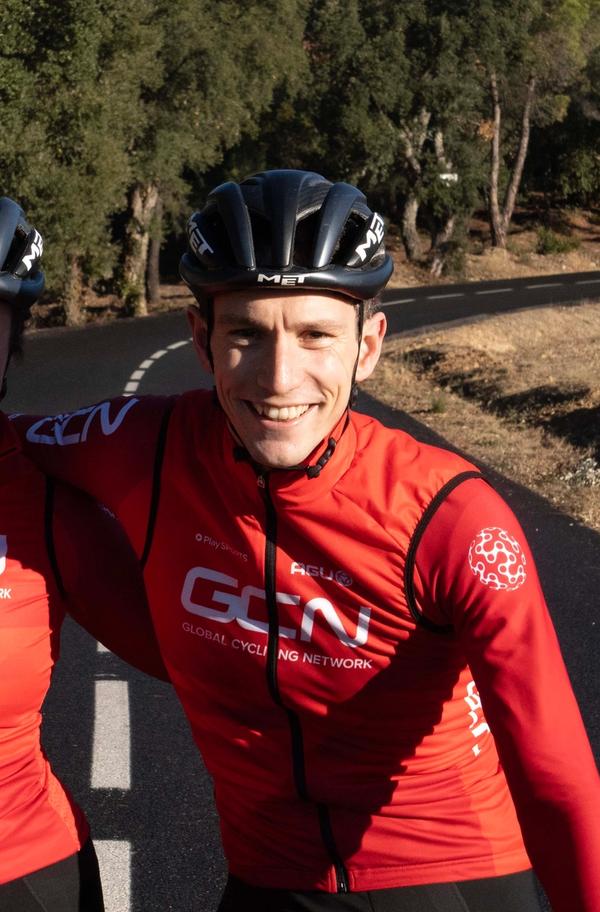







.jpg?w=600&auto=format)


